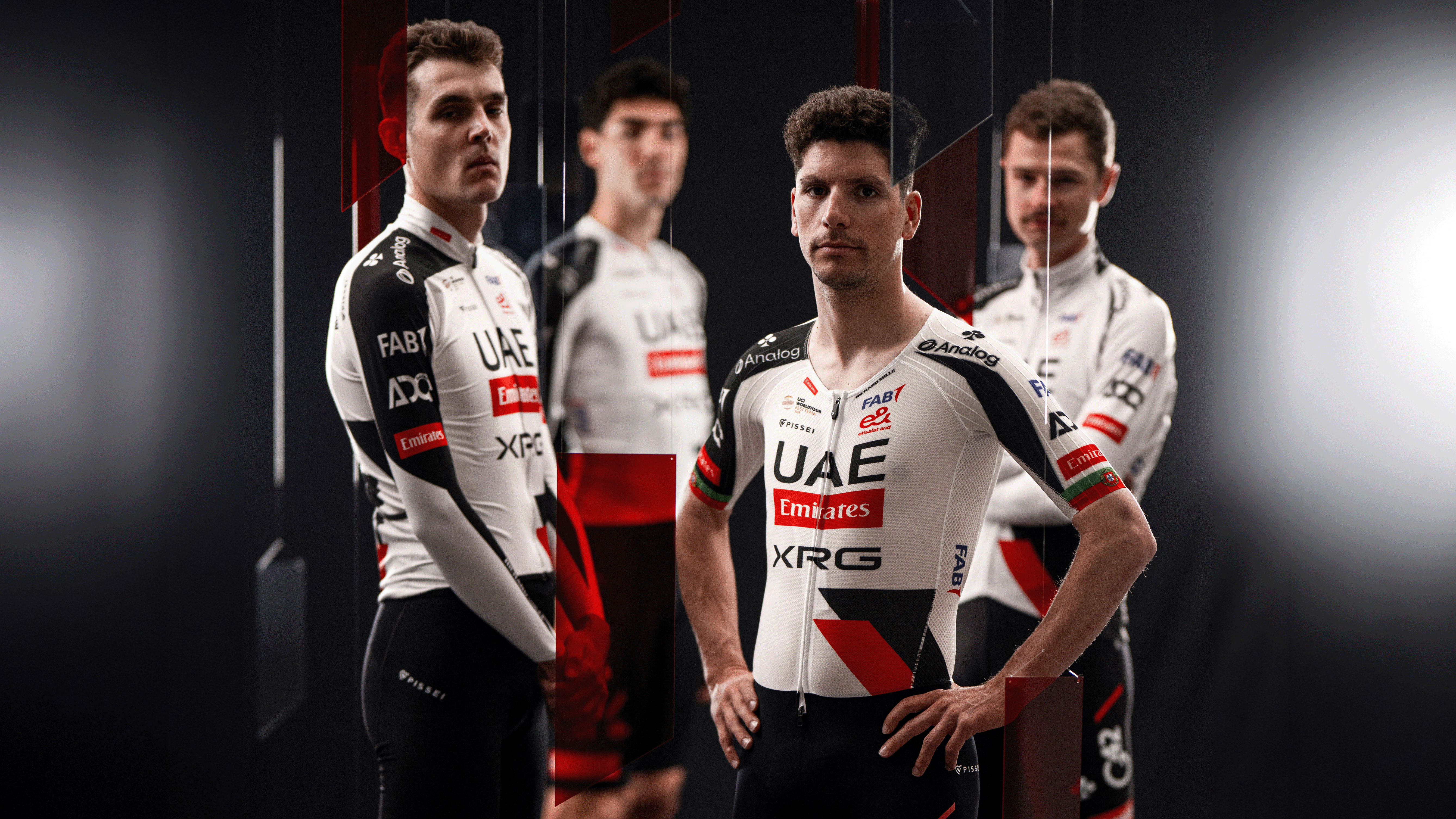Best arm warmers for cycling 2025: Versatile protection for changeable conditions
Add some versatile protection against the cold, wind and rain with the best arm warmers for cycling
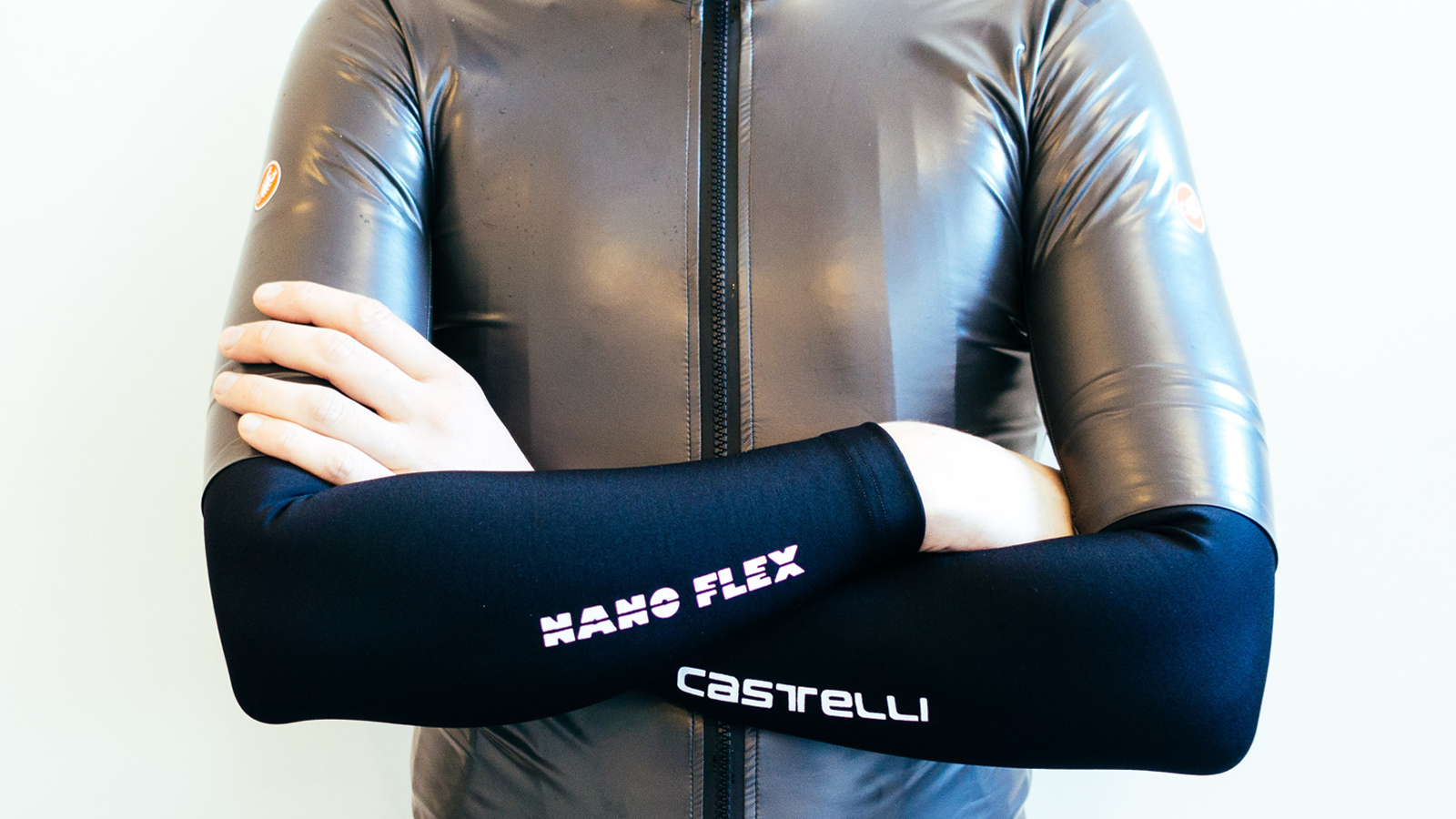
A pair of the best arm warmers will make a valuable addition to any cyclist's kit bag. Arm warmers are worn to provide warmth, protection and comfort when paired with a jersey, but also, crucially, can quickly be removed and stowed in a jersey pocket or even a bag.
There is a huge variety of arm warmers on the market, the best will be comfortable, look good and fit well, that's all we really need them to do. Some are very thin for light protection, and some are warmer and even have water-repellent coatings.
I've been wearing and riding in arm warmers for 20+ years, and have tested every pair in the guide out in real-world conditions to see what works and to provide a good range to choose from.
This guide will help you choose the right pair of arm warmers that are best suited to your own riding needs. The top overall pair for me in this guide are the Castelli Nano Flex 3G arm warmers, chosen for their protection, comfort, style and perfect length.
Arm warmers are the perfect tool up to a point, but the best long sleeve jerseys or best cycling rain jackets may also be needed to stay warm and comfortable.
Arm warmers have a relatively simple job to do, but the best cycling kit is the stuff that you don't notice you are wearing, that just works, and that is what we have tried to select here.
For loads of expert advice on how to wear arm warmers properly and what to look out for, head to the bottom of the page.
Best arm warmers for cycling - our top picks
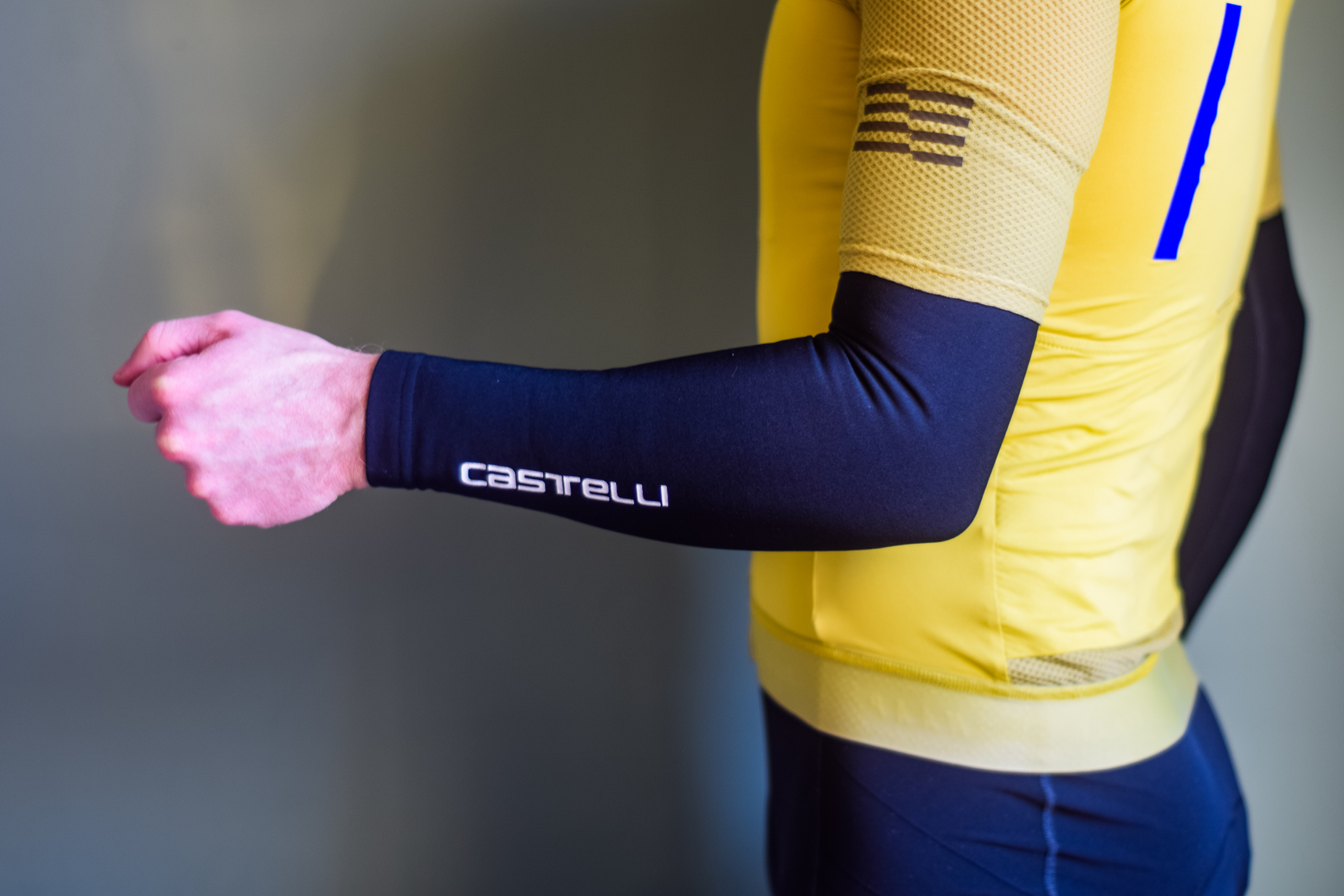
➕Stylish with an excellent fit and feel
➕Hydrophobic treatment
➖Narrow arm gripper can pinch
The Castelli Nano Flex 3G arm warmers are close to being the perfect product. They are easy to pull on and off, and soft and comfortable to wear with a fleece-lined inner and water repellent treating externally. They also look really stylish, and I found them to be the perfect length, not too long or short.
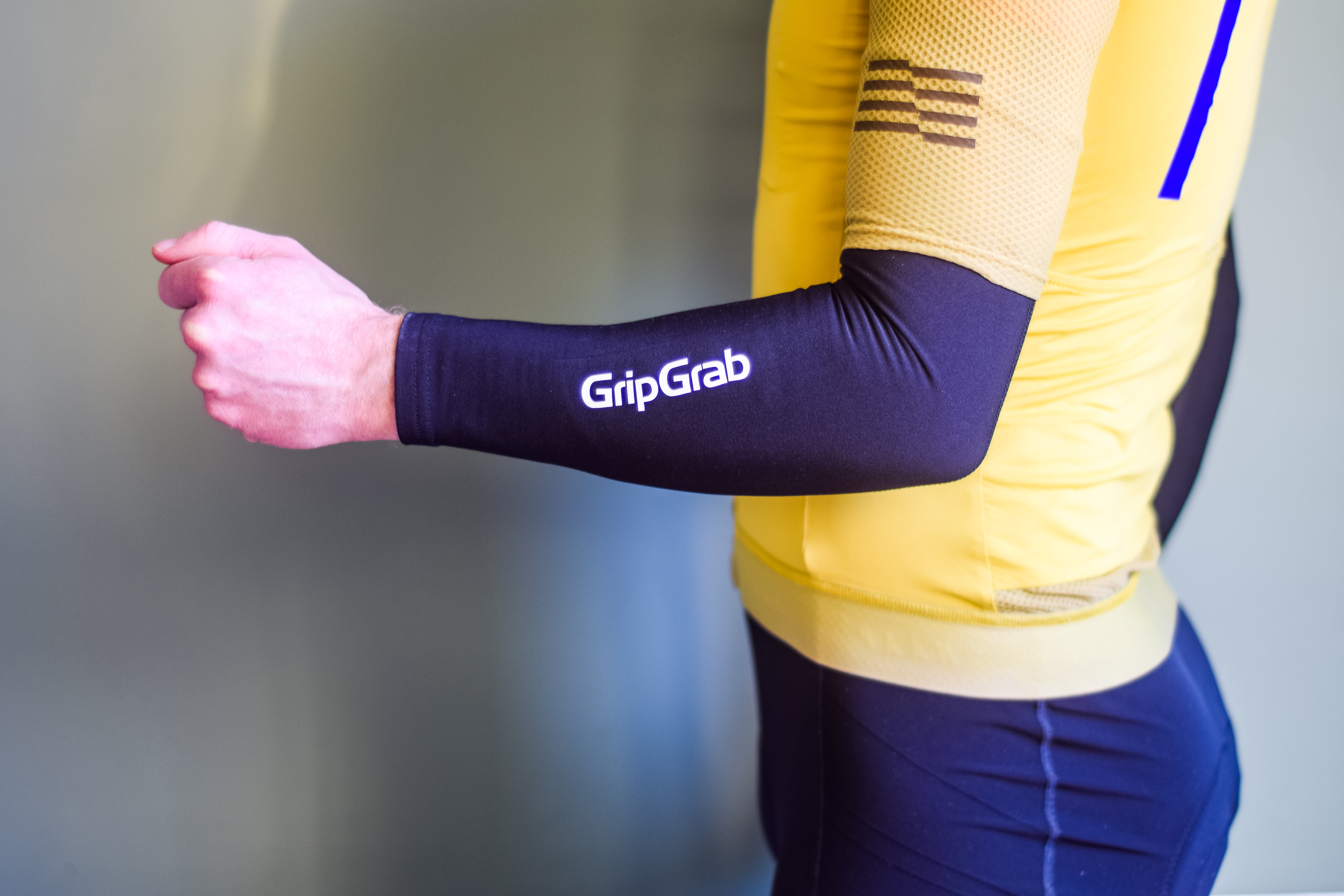
➕Good quality at a great price
➕ Very soft brushed fleece liner
➖ Arm gripper may niggle
The GripGrab RIDE Thermal arm warmers are another excellent pair that can be found for great prices. I found the length to be very good, not too long, and the soft, brushed fleece interior is very nice. Thermal is in the name, but I could use them for pretty much everything. I love that there's an 'L' and 'R' letter inside each one to help when getting changed.
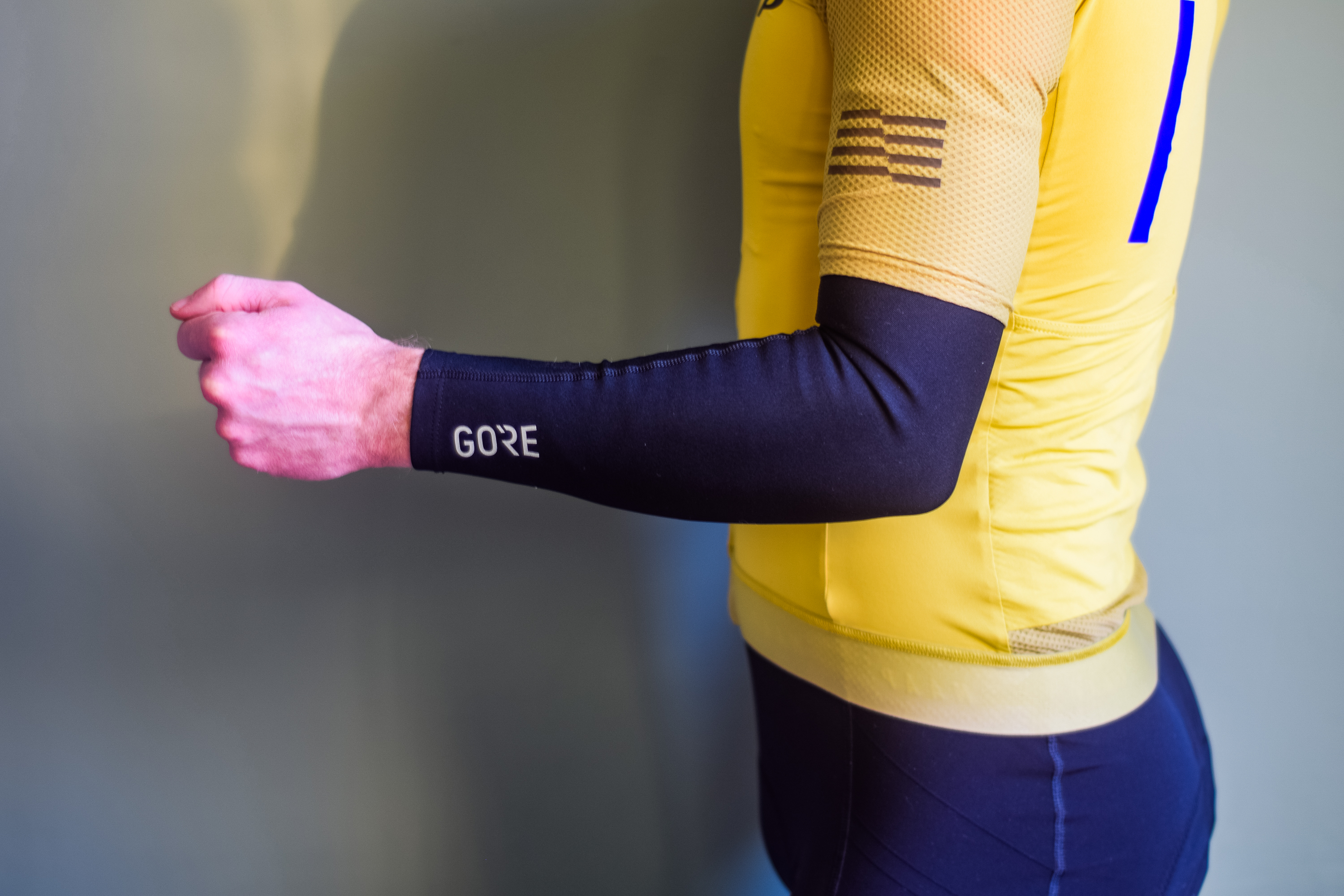
➕ Incredible wind resistance
➕Stylish looks
➖ Not as soft and comfortable
The Gore Shield Windstopper arm warmers are the second thinnest in the guide and use Gore-Tex Infinium material to focus on protecting you from windy and cold weather. The Infinium material blocks wind very well. These are stylish arm warmers with reflective details, with clear direction markings at the tops of the arms. Ideal when wearing less and with layers in changeable, cooler conditions.
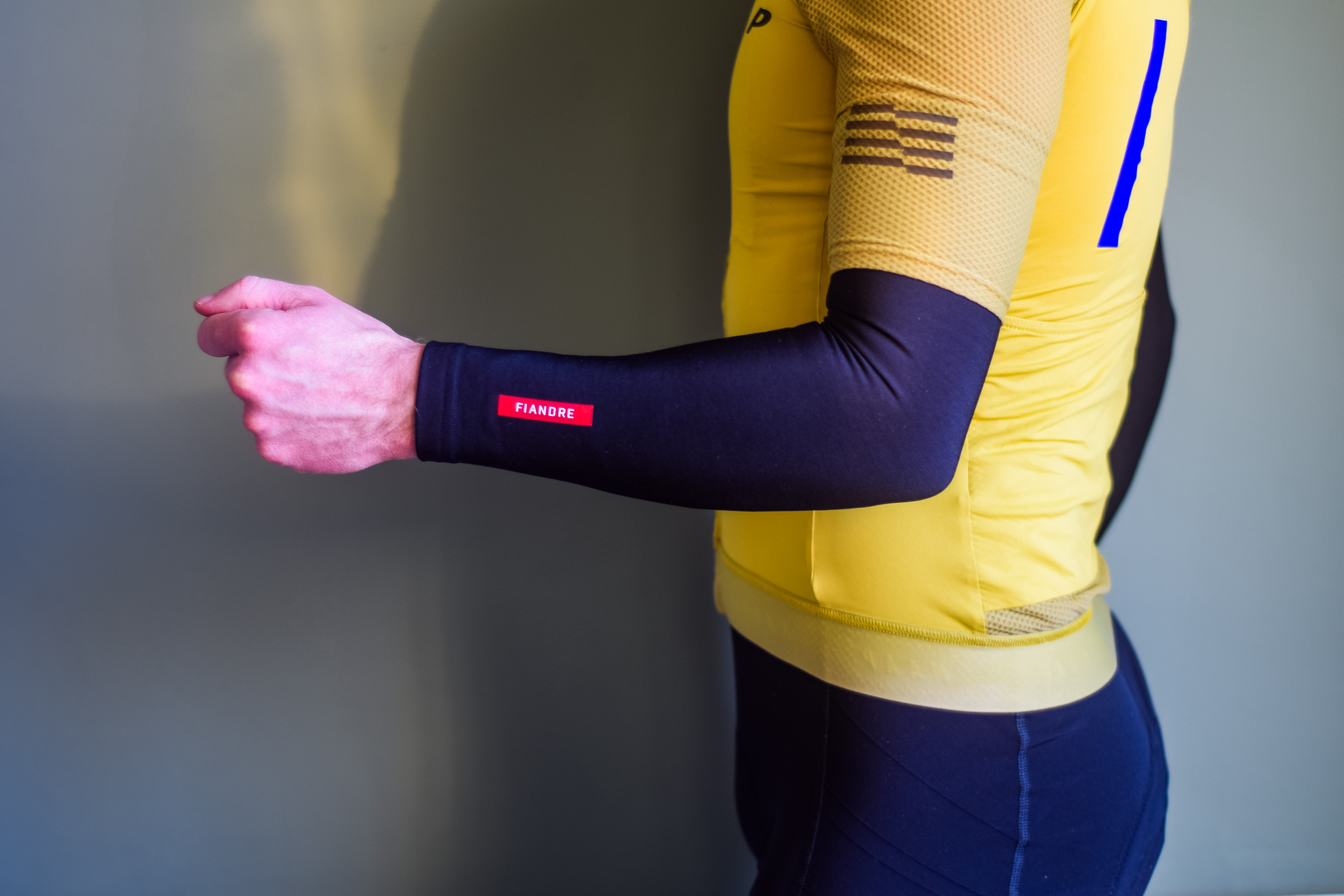
➕Slightly thicker for extra warmth
➕Good DWR coating
➖May be too warm in warmer temperatures
The Fiandre 2 arm warmer builds on the popular Fiandre option from Sportful that has been available for years. The Fiandre is an arm warmer suited to colder temperatures with its slightly thicker than average brushed fleece construction and really good DWR water repellent treatment, a great option for foul weather riding, especially at high intensity.
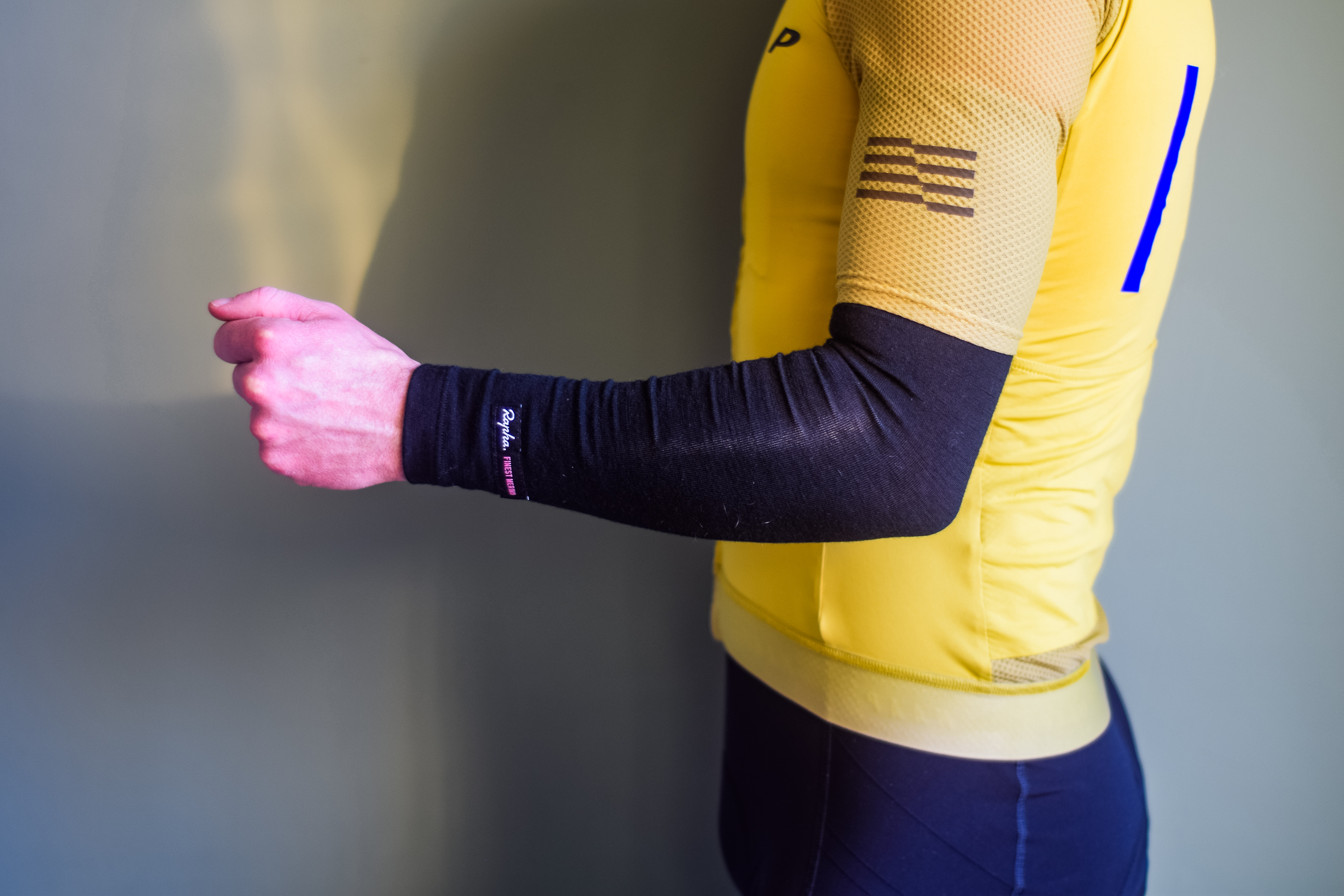
➕ Merino blend brings qualities of natural fibres verging on the warmth of Roubaix fabric
➕ Comfortable in a wide range of conditions
➖ Can wrinkle a little more than other
➖More expensive than a lot of good options
These luxury arm warmers from Rapha are 97% New Zealand Merino wool and 3% Lycra. Here you can enjoy the benefits of Merino in an arm warmer. These are a super soft and comfortable option that are a little more relaxed in fit. They stay in place thanks to a good silicone arm gripper, but do wrinkle a little bit more than some options here.
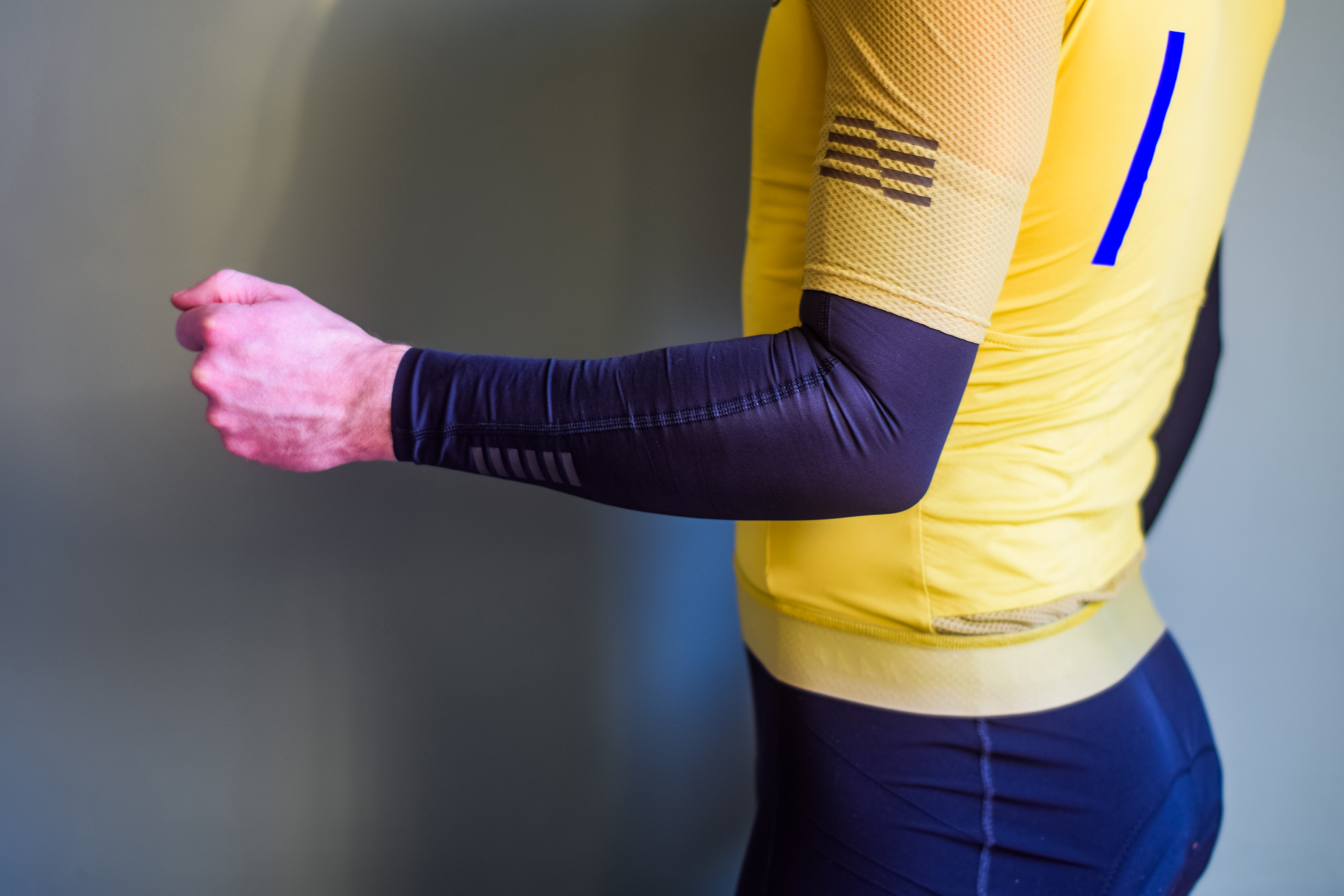
➕ Super light and packable
➕ SPF40 protection
➖Beware they size up larger than average
➖So light they may be redundant at times
These Rapha Arm Screens are the lightest and thinnest arm warmers in the guide. They have UPF40 sun protection, so they may be ideal to pull on if you're concerned about sun exposure and want to carry lightweight protection. If you want the lightest option, these may well be the way to go. For everyday use in cooler conditions, these may be too thin.
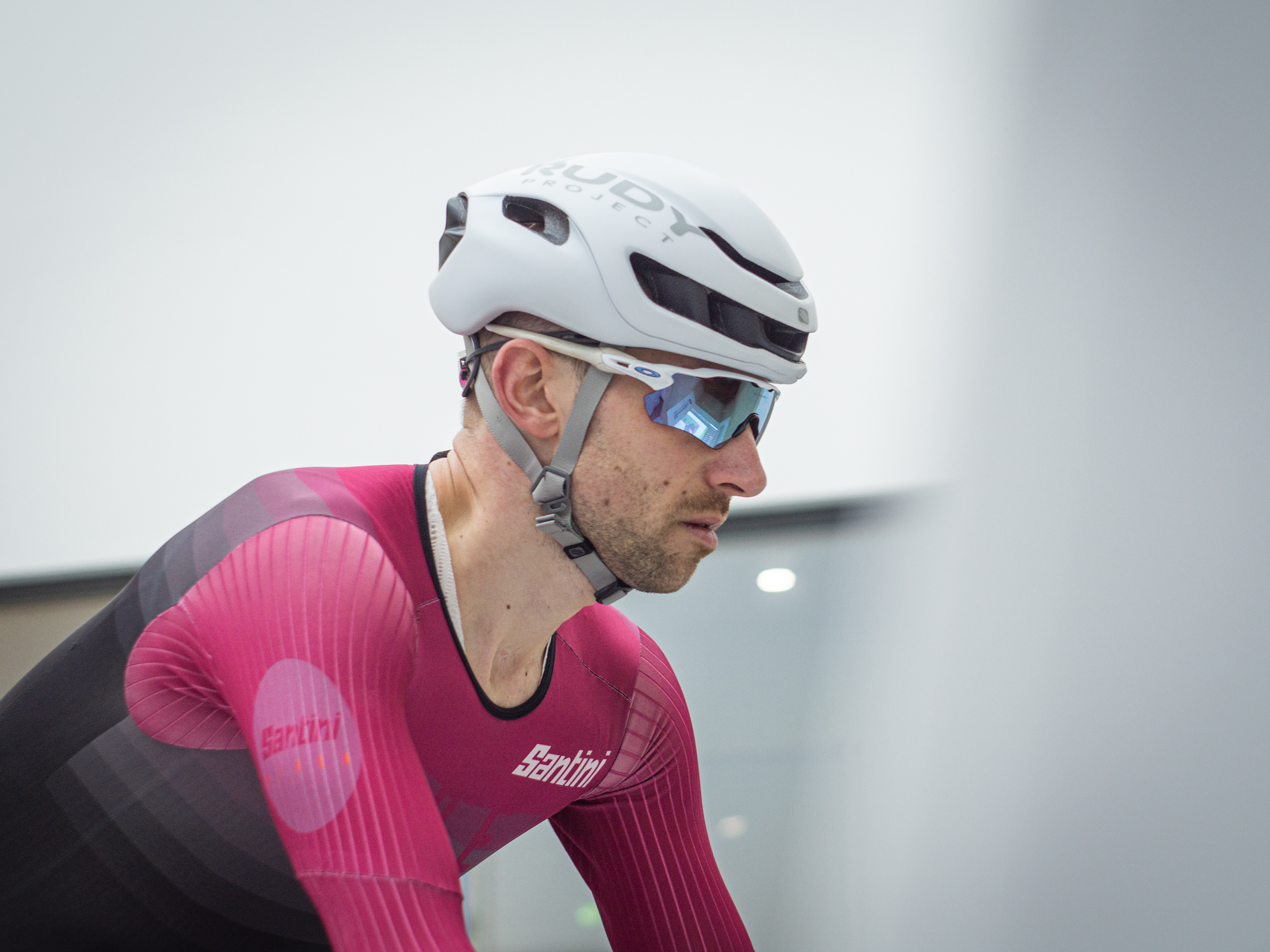
I've been cycling for over twenty years and have been wearing arm warmers for about that long too.
I ride in all conditions and at a range of intensities. Most recently, I was clung to the wheel in front on my local chaingang testing the Castelli Nano Flex arm warmers DWR treatment one final time as I was sprayed with rain and road spray.
Last updated on 26th of November 2025
A big update to the guide to ensure all the products are still current and available. The new Sportful Fiandre 2 arm warmers were added, replacing the old Fiandre models. We also added new models, including the excellent GripGrab RIDE Thermal arm warmers and Rapha's luxurious Merino arm warmers. All products got new imagery, which shows them being worn by our Tech Writer, Tom. We added more expert buying advice on topics like how to wear arm warmers in the right way, etc.
How to choose the best arm warmers for you
What size arm warmers do I need?
Ideally, you'll be in a position to try a pair of arm warmers on, which certainly takes some of the guesswork out of things. However, this isn't always possible, not least for those shopping for cheap cycling clothing online.
Generally speaking, your arm warmers will match your jersey size, but nearly every manufacturer will have an online size guide you can measure up against and that is the best place to start.
Arm warmers should be fitted; you don't want them falling down or being too baggy. That's the key point for me.
If you're focusing on warmth and protection, the maximum amount of arm and wrist coverage will be good. But if you're wearing them in warmer conditions or whilst riding hard, if they are a touch shorter, it won't matter too much; if anything, I prefer a shorter arm warmer overall and roll mine up slightly sometimes to expose my wrists if I want to cool down a touch.
Overall, find a pair which you think will meet your needs, measure up and go for it.
Do I wear arm warmers over or under my jersey sleeves?
Generally, arm warmers are worn under your cycling jersey sleeves the majority of the time, and you will nearly always see cyclists wearing them this way. Riders will put them on after their jersey, or before, there's no right or wrong here.
Sometimes, if cyclists are pulling arm warmers on whilst on the bike, in a race or when they don't have much time, they will just pull them over their jersey sleeves for instant protection.
Which fabric is best for arm warmers?
The majority of arm warmers combine a fleece-lined inner and a stretchy Lycra outer into what is known as 'Roubaix' fabric. Given that they're designed to add insulation on cold days, it's usually the ideal choice.
If you want a pair for high-tempo racing, then there are some available in uninsulated fabrics, so opt for these for race day, or if you run particularly hot and just want something to take the worst of the wind chill away.
Merino options are rare but available. These will be more breathable while maintaining insulating properties, so perhaps a better option if you don't want to be constantly taking them on and off throughout the day.
Are arm warmers waterproof?
None will truly be waterproof, as that would require the use of a membrane, resulting in a very crinkly pair of tubes. Many do, however, come covered in a durable water repellent (DWR) coating. This effectively makes water bead up and run off the surface, rather than soaking in.
It's not a permanent treatment and will eventually wear off any product, but it is easy to top up with commercially available wash-in or spray-on treatments.
It's also possible to simply add your own DWR to any set you like with these products at home, so if one pair fits you perfectly but they aren't water resistant, then you can easily change that to suit your needs.
Will my arm warmers fall down?
If they fit correctly, they shouldn't do. Most will be equipped with an elasticated hem at the top covered in tacky silicone in some form or another to grip your arm and stop them descending into a frustrating bundle around your wrists.
Some offer grippers on both sides of the hem to also resist the tendency of your jersey sleeves to ride up. As mentioned above, if you do find yours keep falling down, then a quick play with the sewing machine can work wonders, or even a pair of safety pins if you're in a pinch, to reduce the diameter of the hem.
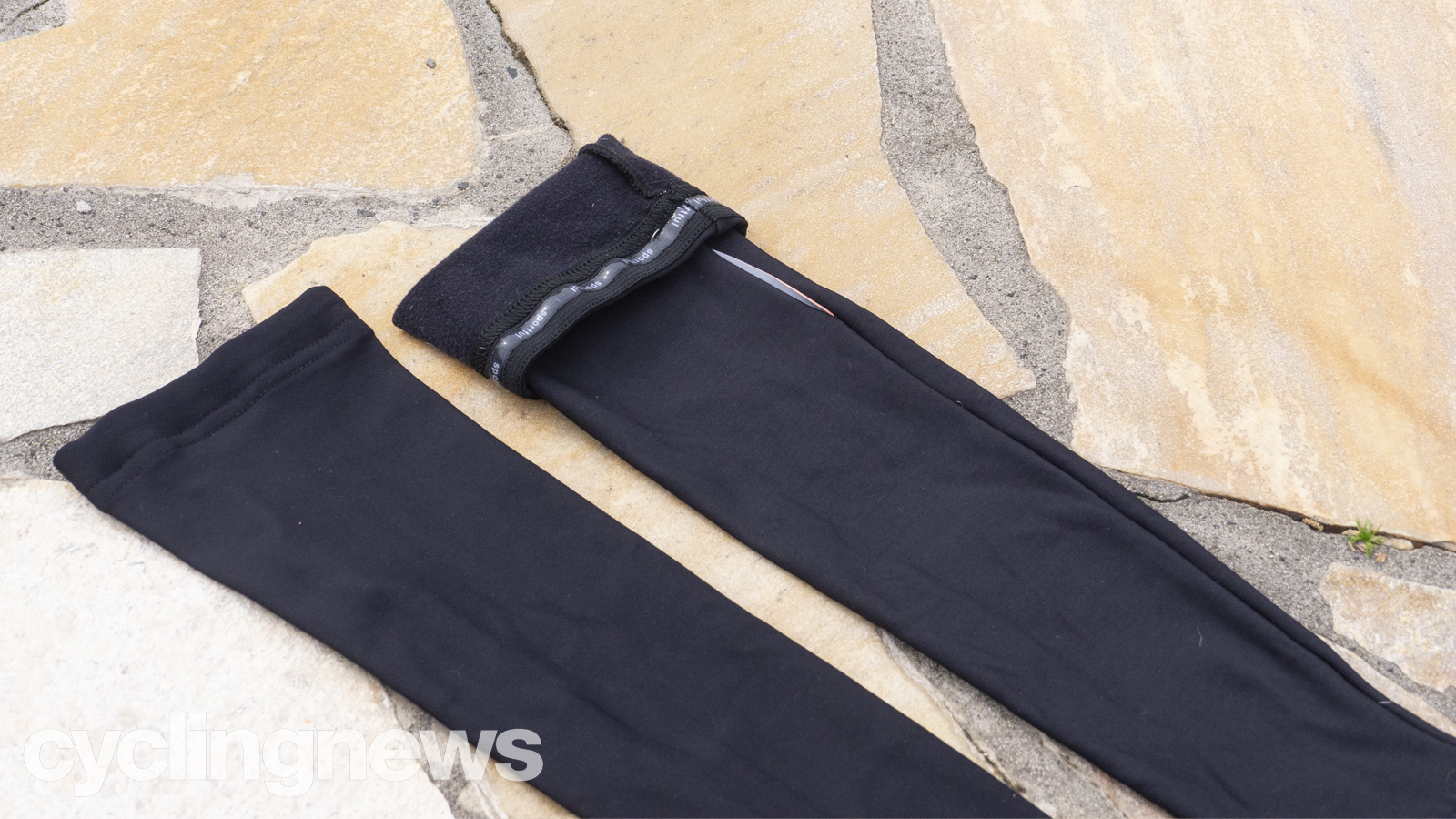
What is the point of arm warmers?
Particularly in spring and autumn, the beginning of a ride can be noticeably colder than the middle, or if you're setting out late, then things can rapidly cool down when the sun dips below the horizon.
Having a set of arm warmers to throw on allows you to account for these smaller changes in temperature easily, without resorting to donning a jacket and risking a boil-in-the-bag situation.
Are arm warmers worth it?
If you consider the cost of a long-sleeved jersey, they do offer excellent value for money, considering they effectively turn any short-sleeved option into a long-sleeved one.
While for winter a dedicated long-sleeved jersey is going to be the ideal choice in most cases, if you rarely ride in the very coldest conditions, a set of arm warmers may protect you against the elements at a much more palatable price point.
How tight should arm warmers be?
When trying on arm warmers, there's a balance to strike between being tight enough that they stay in place without falling down, but not so tight that they dig in, cause discomfort, or worse, cut off circulation. The whole point is to warm your arms, and restricting blood flow is the fastest way to achieve the opposite.
They should sit something like a second skin, with enough compression to stay in place when you move your arm around.
How do we test arm warmers?
You can trust Cyclingnews
Our arm warmer testing is as comprehensive as we can make it. We check the arm warmers for environmentally friendly packaging that isn't too bulky and go from there.
The fit of each arm warmer is examined and checked, and twenty years of arm warmer use gives me a great basis for being able to tell if an arm warmer will be comfortable and properly fitting on the bike.
I test reflective details for effectiveness by using a light in the dark and any DWR water repellent coatings by running the arm warmers under the tap and shower head whilst wearing them (always fun) and timing how long it takes each warmer to get compromised. I then take things outside to ride in wet conditions where there are showers or lots of road spray.
Riding at different intensities is also very important for gauging what an arm warmer is best for, and if it's still comfy and staying in place when you're riding flat out. I wear each pair on steady rides and whilst training hard and completing efforts, etc.
The latest race content, interviews, features, reviews and expert buying guides, direct to your inbox!

Josh is Associate Editor of Cyclingnews – leading our content on the best bikes, kit and the latest breaking tech stories from the pro peloton. He has been with us since the summer of 2019 and throughout that time he's covered everything from buyer's guides and deals to the latest tech news and reviews.
On the bike, Josh has been riding and racing for over 15 years. He started out racing cross country in his teens back when 26-inch wheels and triple chainsets were still mainstream, but he found favour in road racing in his early 20s, racing at a local and national level for Somerset-based Team Tor 2000. These days he rides indoors for convenience and fitness, and outdoors for fun on road, gravel, 'cross and cross-country bikes, the latter usually with his two dogs in tow.
- Tom WieckowskiTech writer
